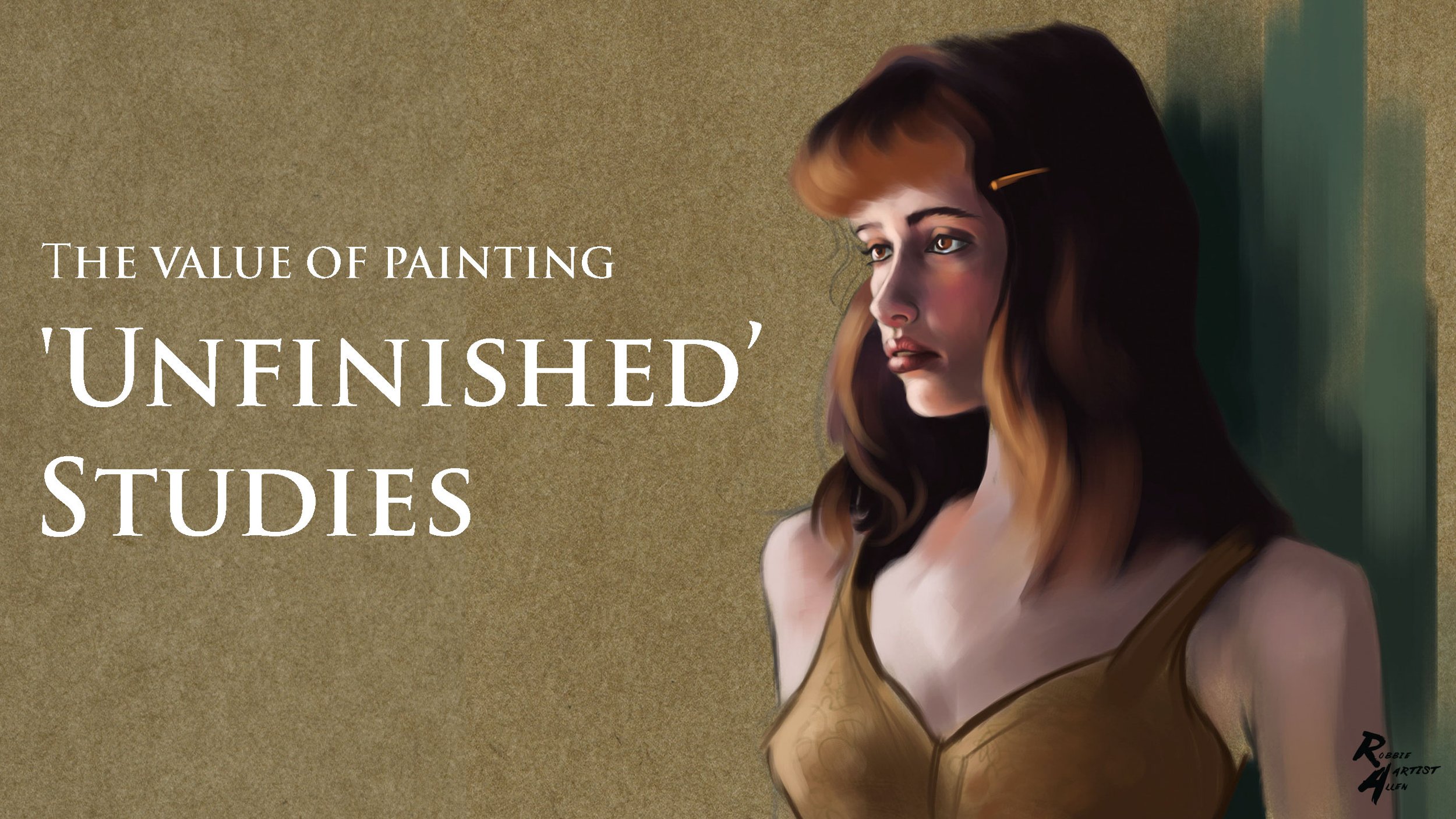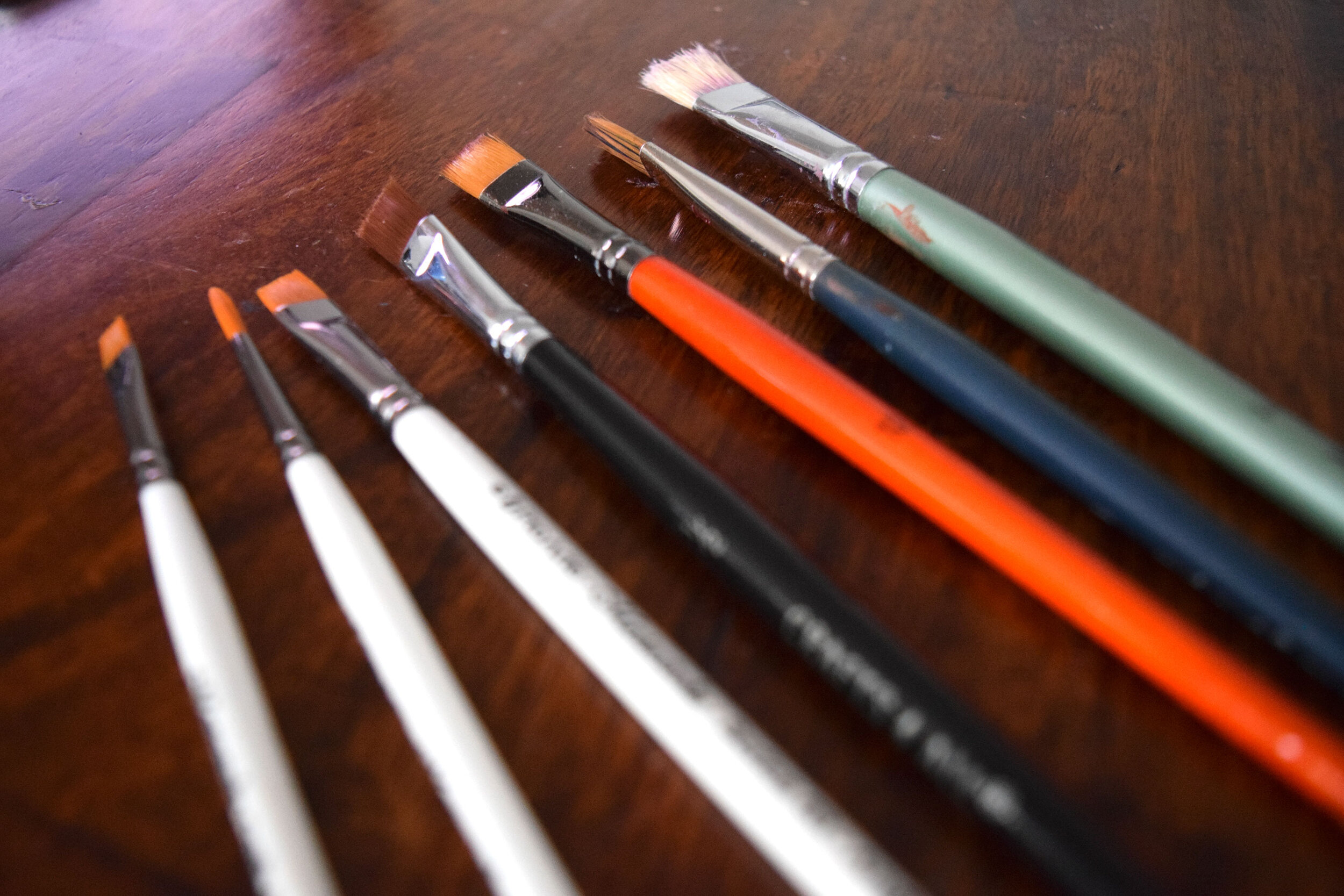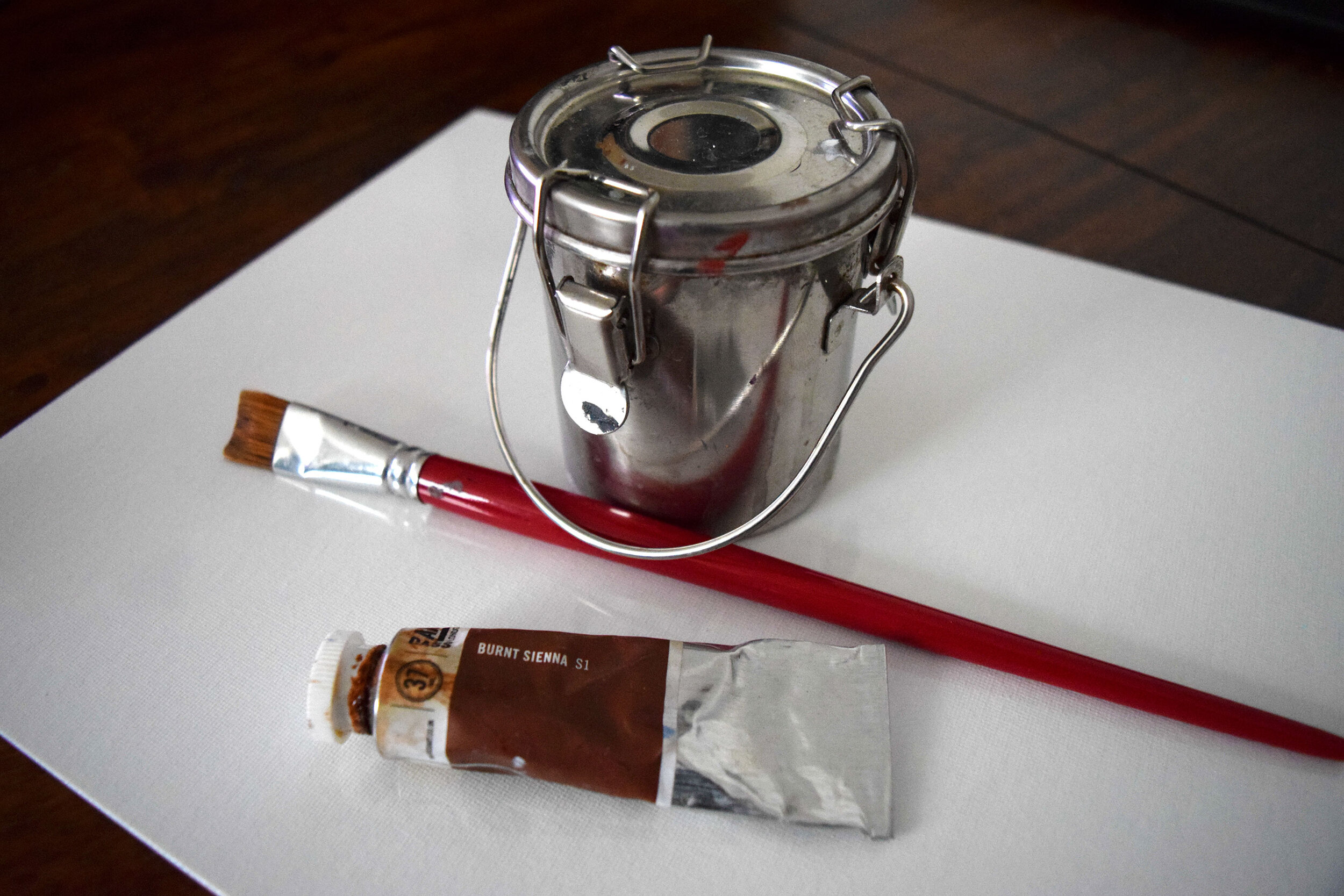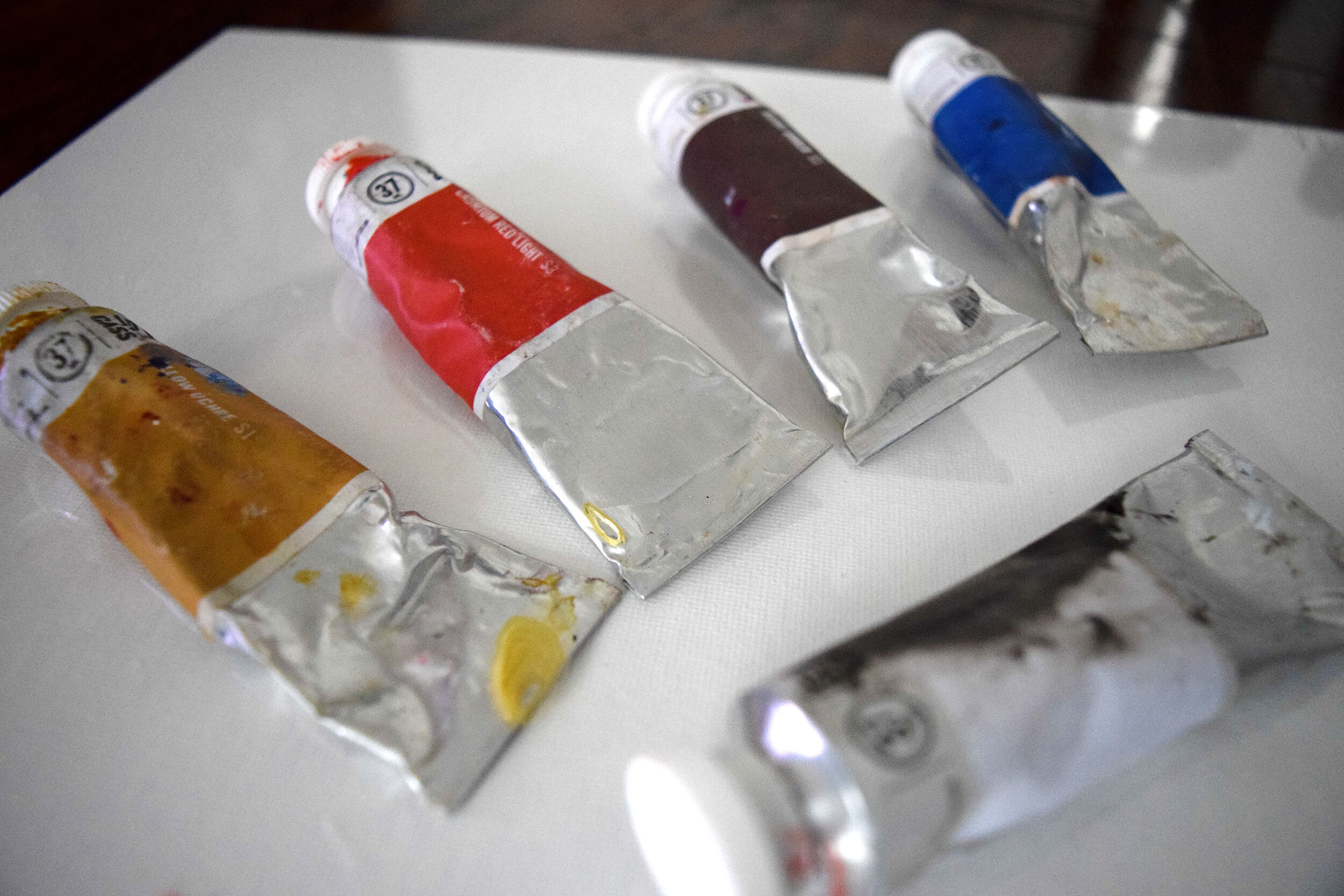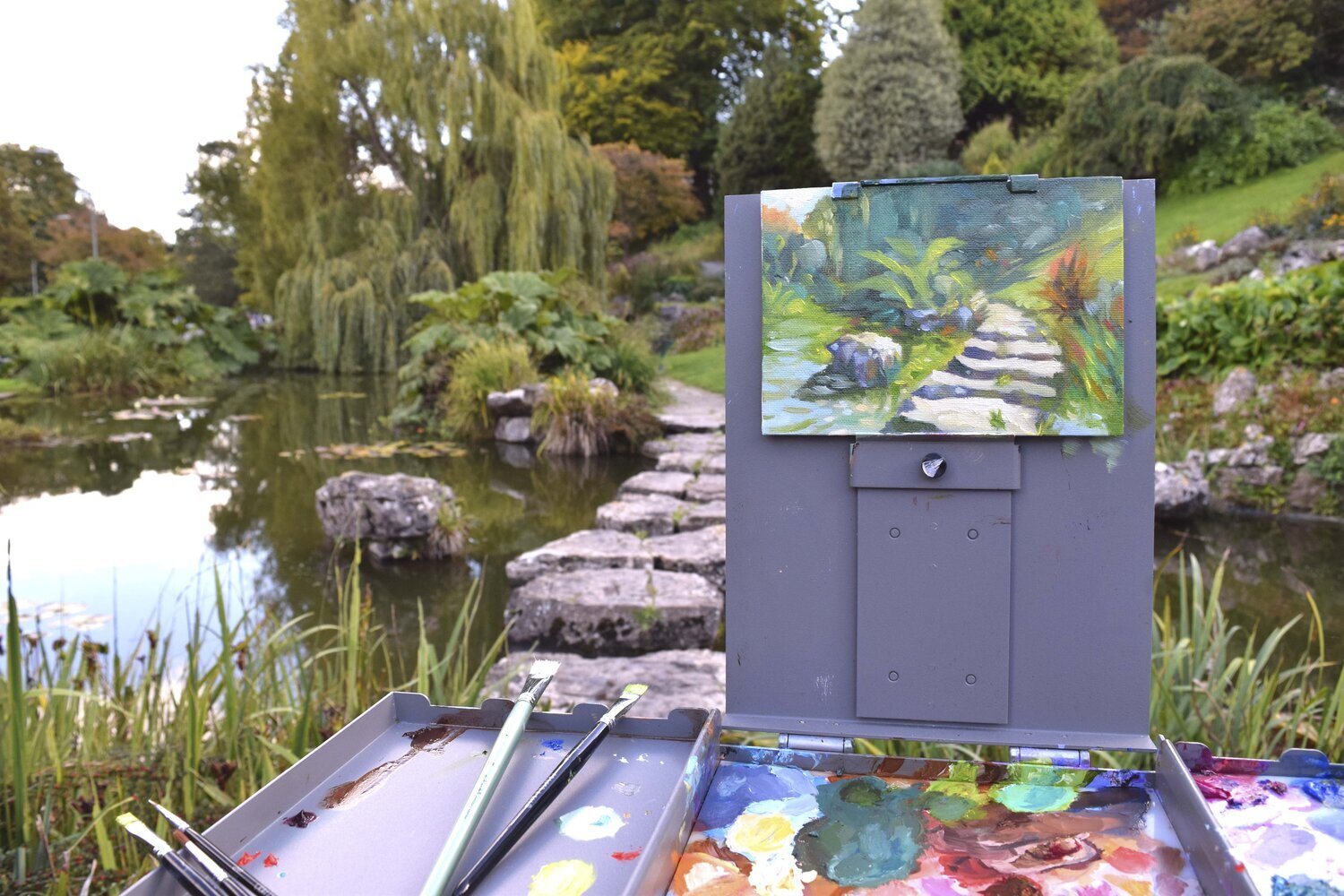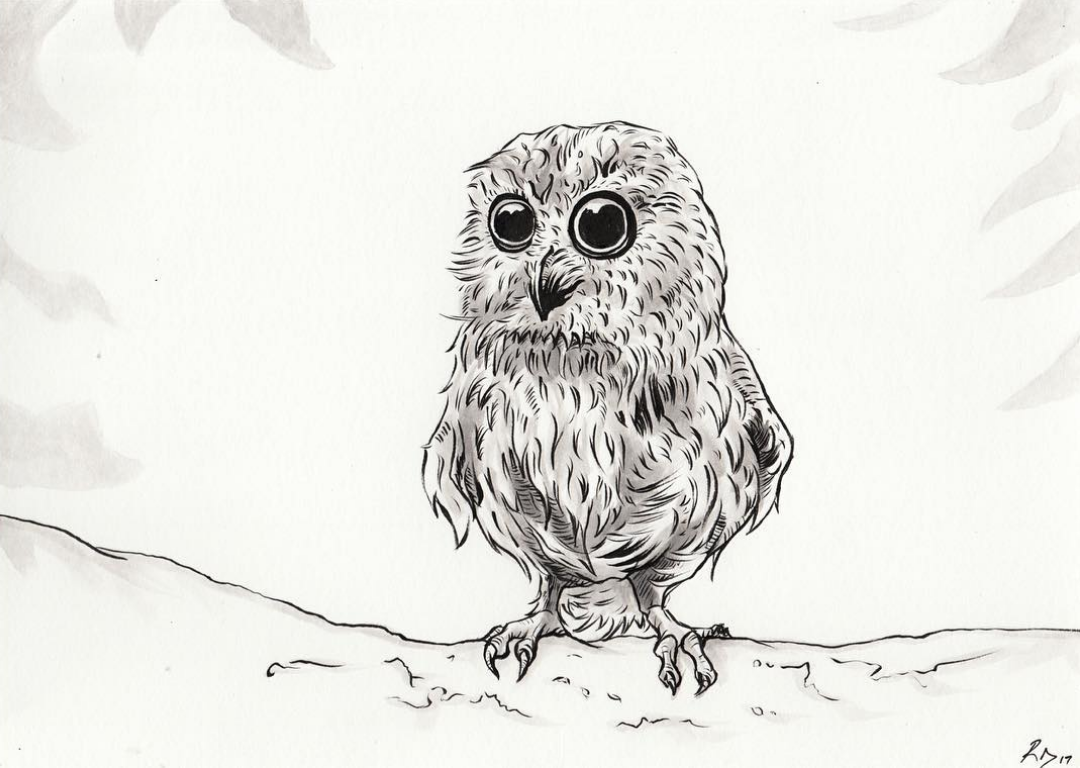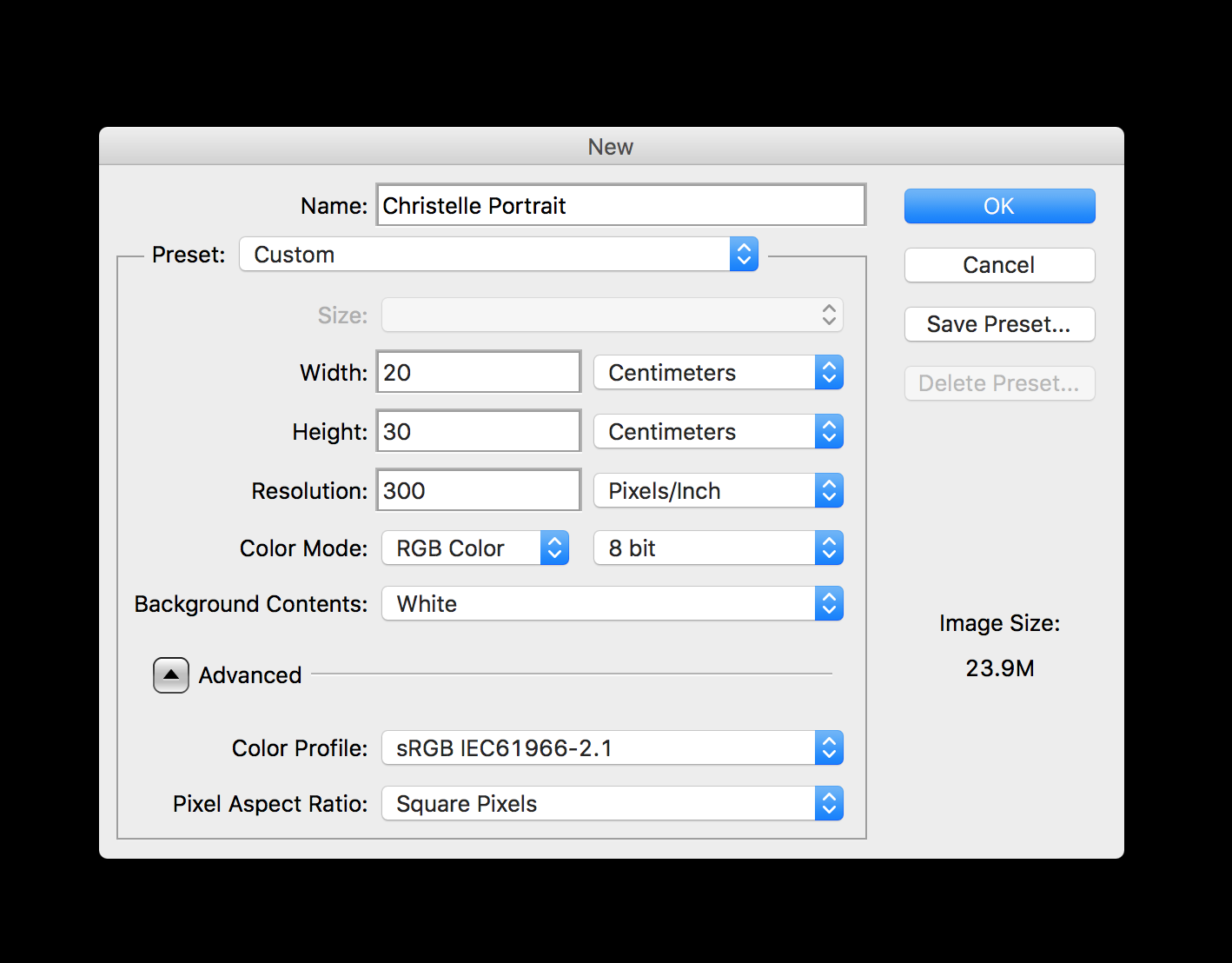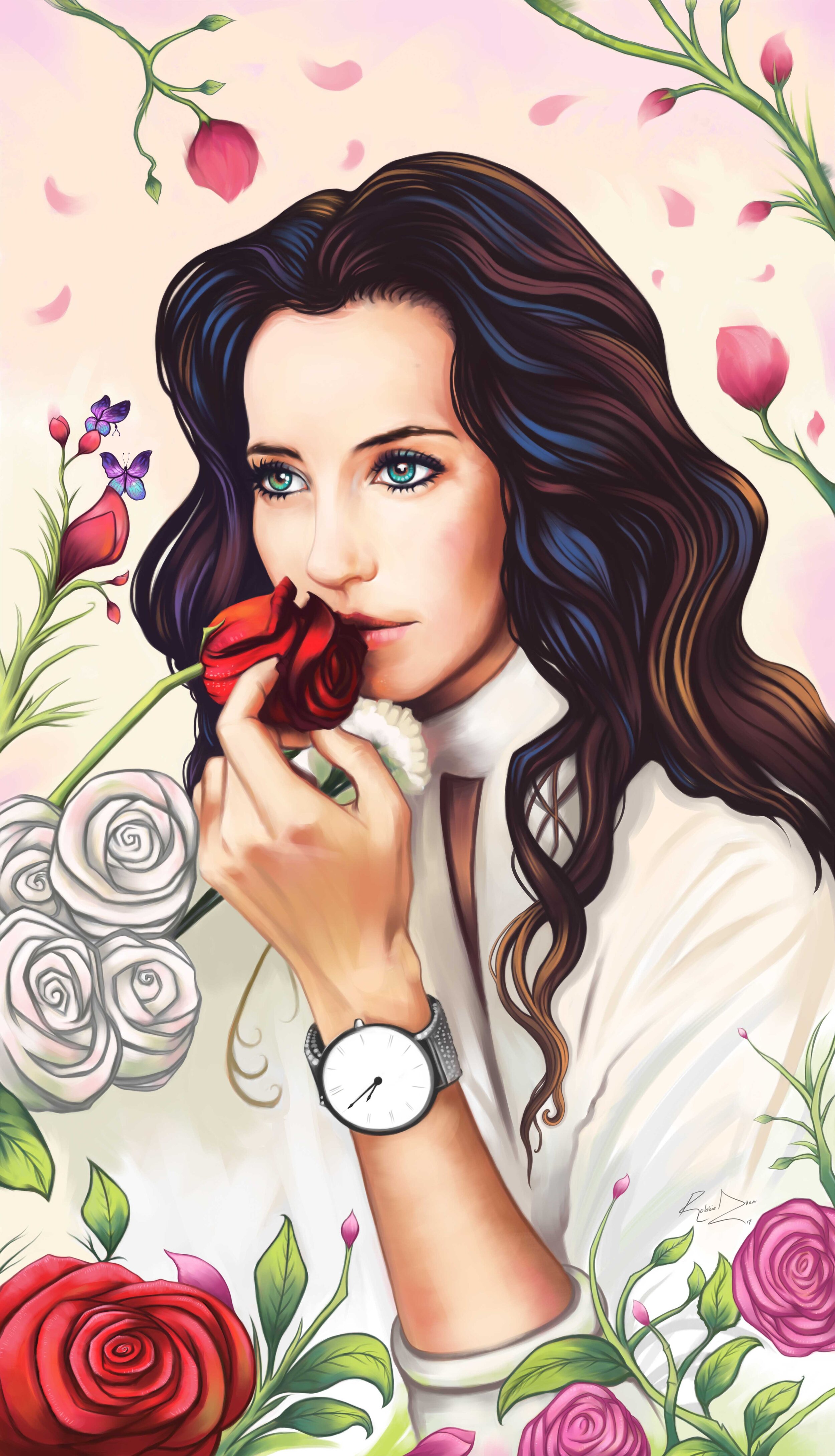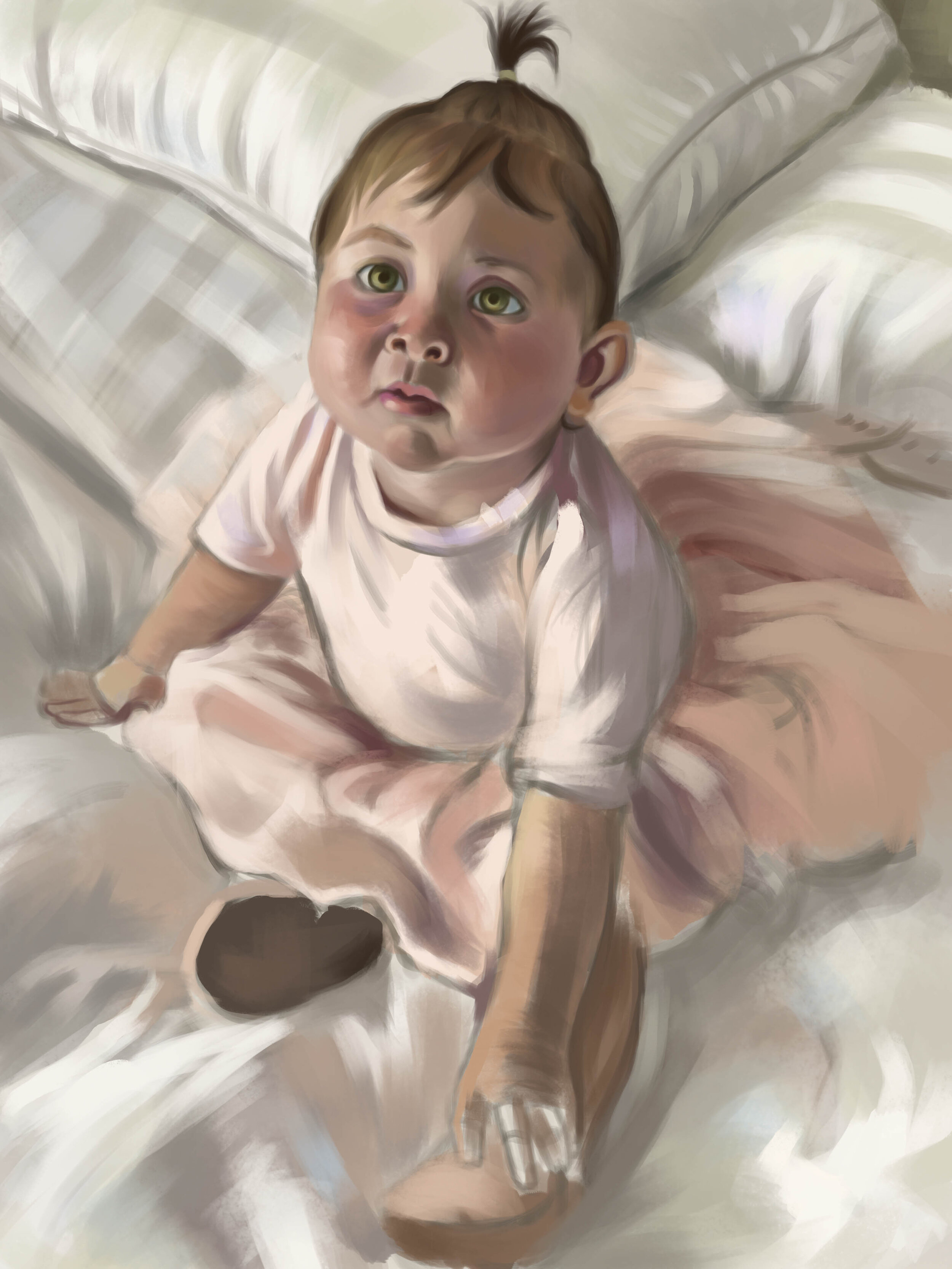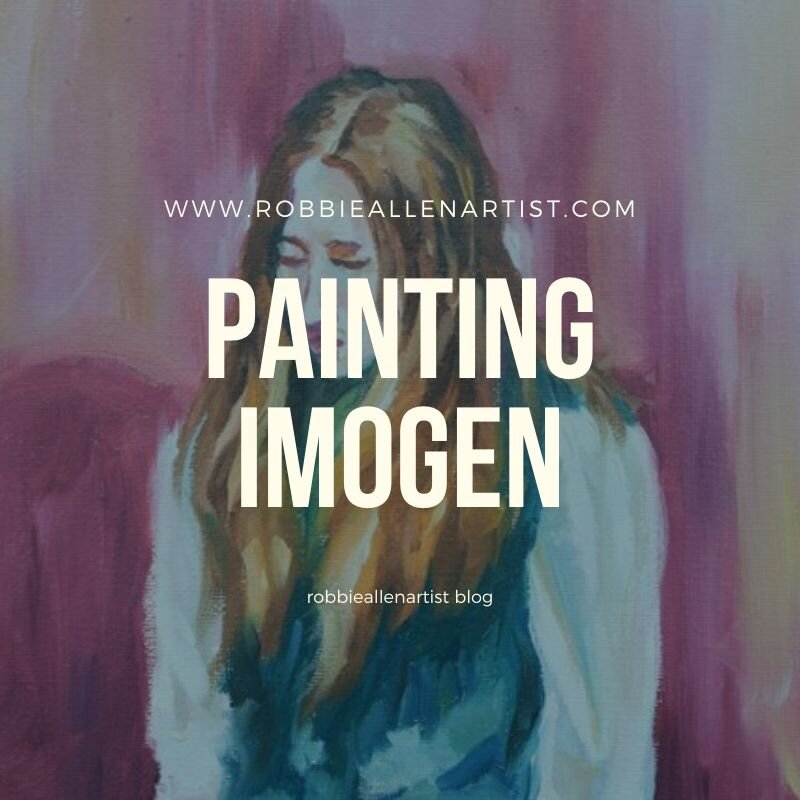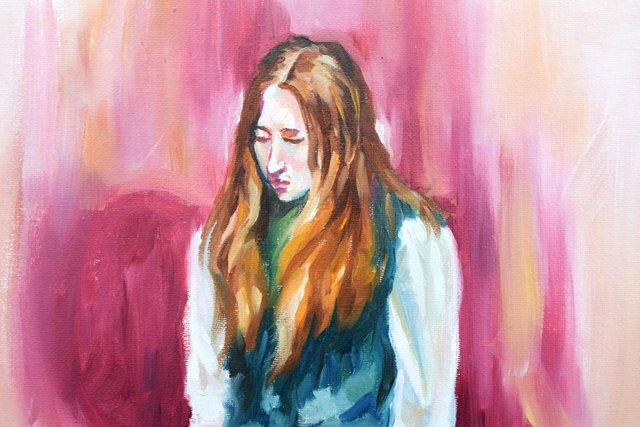As artist's we can sometimes overwork our paintings. Many of us are known to endlessly 'noodle' and render too much, often taking emphasis away from what's really important in a piece of art. It becomes an art in itself to know exactly when to call a painting 'finished', even if it begins as a simple study, and ends looking 'unfinished'.
The Value of Painting Unfinished Studies (Youtube Video)
In this video I discuss my point of view on my I think we can find value and some of our best pieces of art in our unfinished artwork, whilst sharing examples of master artists of the past, who also left their works unfinished.
How do you feel about leaving a piece of art, a drawing or painting unfinished? Do you feel confident enough to call your own work finished, knowing that you could press on and render everything?
Let me know in the comments below.
I hope you enjoy this video and find some value in it. If you did, give it a thumbs up, subscribe to my channel and share. If you would like to help support my work, you can subscribe to me on Patreon for exclusive and early art content: https://www.patreon.com/robbieallenart
This is the link to the video again: The Value of Painting Unfinished Studies
Thank you,
Robbie
How To Paint Candles In Natural Light (In Photoshop & Procreate)
There’s something quite magical about learning how to paint certain textures and elements, especially fire or the glow of a naked flame, and how it interacts with surrounding objects.
In this tutorial I break down in a few simple steps, how to paint candles in natural lighting digitally using Photoshop or Procreate.
My Top 9 Digital Art Paintings of 2020 & Reflections on The Year
Perception of Time
Personally for me the year flew past. I am amazed with how quickly each week passes, I can't believe 1 year has gone by already. But I have been experiencing this for a few years now, not just in 2020. I think the main reason why was because I managed to dedicate much of my time to my art, study, and overall creative productivity, which helped me to feel elevated during tough periods. In 2018/2019 I was doing a lot of travel, combined with art practice, and this definitely seemed to add to the sense of acceleration of time to my own personal experience. 2020 was a year I was able to fully dedicate myself to art and further study.
Read MorePainting A Portrait of A Wolf
Painting a portrait of one of my favourite animals, the wolf! In this tutorial I will show you the step-by-step process and my thought process of how to paint a realistic digital portrait of a wolf using Adobe Photoshop.
Read MoreHow To Paint The Figure Alla Prima
Painting Alla Prima
One of my favourite practices as an artist, is to paint from a live model in one session ‘Alla Prima’. The term alla prima means to finish a painting in one sitting, or in one session.
Painting the figure from life forces us to make positive, deliberate decisions. We have a time limit. The model, a living breathing human being, is right in front of us, and is skilfully and patiently, and sometimes even strenously, holding a still pose for the other artists in the room, for a set period of time, usually co-ordinated by the group organiser. It is our job as artists to capture some kind of unique expression, essence or resemblance of the model that we find interesting, unique or attractive. Such as capturing the gesture, mood, emotion or feeling, and record that unique moment in time through our decision-making and mark making.
We often do this through meticulous calculation, constantly measuring body proportion, distances, paint mixing, light & shadow, warms and cools, combining our discovery and knowledge with creativity and skill, with the physicial materials we have in our posession.
In this blog post, I am going to show you how I approach painting the figure from life alla prima.
Choose Your Brushes
Imagine you are about to go into battle, you must select your best weapons to face your opponent. You must do this every time you decide to show up at your easel. You must choose your materials wisely, imagine what moves and strikes you will make, visualise yourself executing a hand, an eye or an earring with a few bold strokes, and then bring the chosen brushes to your easel, ready to paint .
“Do not just pick up the brushes you used and cleaned yesterday because they are there. Put those back, look at all of them, and then choose your weapon, like a type of gun or a certain type of sword. You are going into battle and you want the best weapon for the job. ”
The Underpainting
Usually I paint a light coat of burnt sienna, thinned down and diluted with odourless mineral spirits, which is contained inside the metal brush cleaner. But for this painting, I used a thin black wash, which gave the appearance of grey on the canvas panel. Depending on if you want the entire surface area painted, or just a section in the center, you can use a large or medium brush to spread the paint around. Then apply a paper towel to dry and push the paint on the surface.
Close up shot of the thin, grey background I painted on the panel before starting to paint the model.
Background Wash
A background wash is optional, depending on your personal preference. Sometimes I will paint a thin layer of diluted burnt sienna mixed with paint solvent, however I usually do this for landscape paintings. Sometimes for a portrait or figure study, I will paint a thin wash of black on the canvas panel, thinned out with the solvent, which gives an appearance of a grey tone. I then take a paper towel and smear the paint around the canvas, taking off most of the moisture so I can continue to paint back on top of it within minutes, and sometimes, seconds.
You can always paint directly on the already primed surface of the canvas.
A Limited Palette
This was my limited palette selection for this painting study. It is very similar to the Zorn palette, except I swapped the Ivory Black for a Burnt Umber. From left to right these colours include: Yellow Ocre, Cadmium Red Light, Burnt Sienna, Cobalt Blue and Titanium White.
Additional Paints
I also introduced two additional colours for this study, to paint vibrant colours in the models red dress. I chose Permanent Yellow Deep for a more saturated yellow/orage which I used as some of the reflected light on the models red dress, and Alizarin Crimson, to get some vibrant darks in the models dress.
Mixing Your Skin Tones (Limited Palette)
Why the limited palette?
From my experience so far, I like to keep things simple with portraits and figure paintings, especially when it comes to mixing skin tones, and when I know I need to be quick. By using a limited palette of around 4 colours, you will be surprised at the amount of variety of Hues (colours) and colour saturation you can create through mixing on the palette. I usually stick to the Zorn palette, using Cadmium Red, Yellow Ocre, Ivory Black (a cool black which can give the appearance of blue when placed against warm tones), and Titanium White.
I begin by mixing my mid-tone, I establish this by first checking my values.
This is a close up shot of my skin tone mixtures. For the mid-tone I used about 30% Cadmium Red Light, about 20% Yellow Ocre, and about 50% Titanium White.
For the dark-tone I used Burnt Umber, mixed with a little bit of Cobalt Blue. You can get very dark, darks with this combination, to decrease the value and increase the temperature, I would mix either some additional Yellow Ocre, or Cadmium Red Light, or simply mix in with the mid-tone mixture I previously made.
For the light tones, I add more Titatanium White with small amounts of Yellow Ocre/Cadmium Red Light.
Titanium White will ‘cool down’ and desaturate the paint mixtures, and will also make them lighter in value. You can always add additinal red/yellow to a light/desaturated mixture to increase it’s saturation.
Squint For Correct Values
Squinting is a simple way of establishing the values (lights & darks) of an object, person or scene quickly. When you squint all the way down, colour information is reduced, which enables you to detect the correct light and dark relationships, and local value (how dark or how light) of whatever it is you are looking at.
Sketch The Outline Proportions of The Figure
To start with, roughly sketch the outline and larger masses of the model using either a diluted Burnt Umber or Burnt Sienna. I usually sketch this initial outline with a flat brush, using only the sharp tip of the brush, almost vertically against the canvas. I find that this is very similar to sketching with a pencil. If you make a mistake, just take a rag and scrape of the paint, then try again. Details are not important at this stage, focus on the larger masses, the correct angles and proportions, and try to get done the outline of the sketch in as few strokes as possible.
The Block-In
After establishing the sketch outline of the figure on canvs, the next step is to begin the ‘block-in’, where we establish the darks, lights and mid-tones of the figure. When painting the block-in, paint thickly, mix plenty of paint, use the biggest brush you can, and focus on the larger shapes.
You can see at this early stage of the painting, where I sketched the outline and proportions of the figure using a thin wash of burnt sienna. Some of thee initial sketch lines I left in the ‘finished’ painting, as you will see at the end of this post.
Paint The Mid-Tone First
Many artists will advise that you to begin by painting with the shadows. I also sometimes start by painting the shadows first, but I find that with the figure, I have an easier time determining the correct darks and lights in relation to each other, once I have first established the mid tone. In this case, the models skin tone gave the appearance of a light, golden brown, which is what you would expect to find in a slghtly olive-skin complexion (the model was part Portuguese), combined with indoor warm lighting.
As a side note, I recommend you paint with a cool light bulb shining on both your canvas and your palette, which is similar to daylight, or your colours will look different from the studio light of night, to the natural light of day.
After establishing the skin tones and light/shadow areas of the skin, I begin blocking-in the models vibrant red dress. You can see my thick, impressionisitic-like brush strokes here, I also used a little bit of Liquin Impasto to give a thicker appearance and brush-like texture quality to the paint, which can often get lost when blending.
After placing the mid-tone, I begin blocking in the dark tones, and then progress towards the lighter tones whilst leaving the brightest highlights, usually placed in the focal areas for contrast, towards the end. I blend only a few select edges for an alla prima painting, but not all of them.
Seize The Moment
You should keep in mind that you need to paint in a relaxed state, but also relatively quickly and decisively, as the model is only in front of you for a while. Paint in a calm, sharp, and focused state of mind, seize the moment, and make every stroke count!
Towards the end of the painting, I introduce the additional colours for the warm highlights and shadows of the models dress, I also introduce a mixture of Cobalt Teal, Alizarin Crimson, and Cobalt Blue for the models book. I keep the paint strokes thick, loose and painterly, I also add a few additional warm grey tones to the background, and a few more white strokes on top.
Practice Your Footwork
Painting at the easel, the physical movements involved is a little bit like fencing, or dancing. I think it pays to be light and swift on your feet when painting alla prima, to move away from the canvas often to get the bigger picture, and not to get caught up in the details. The process is almost akin to a lightening fast martial artist such as Bruce Lee, and how he used to practice his forward/backward lunging steps. You will want to dart in and out at a rapid pace, brush in hand, ready to make your best possible stroke, or correction, as if you were lunging with a sword. But of course, you can still do this effectively by moving slowly, if you prefer.
And you should do this often, because the moment you step back away from the canvas, you can more easily see and determine what’s going right and what isn’t. The temptation is to sit still and get lost in the details, try not to do that, especially early on. Practice your footwork, and be light as a feather.
The painting process at the easel is exciting and exhilarating at times, embrace it, and use it to its strengths.
Hold Steady
Now almost like an archer, who has pulled back the string, holding himself as still as possible, who is now set to release the arrow when the exact moment is right, you must also hold your brush as still as you can (and maybe also your easel), to make the brush strokes in the area of interest/focal area are accurate and as close to the mark as you had intended.
As the painting progresses, and you find that the time has come to paint smaller areas or details, especially in the face, hold steady. Sometimes I will even hold my breathe for a few seconds as I paint the finer details in the face as I find I can keep my hand held in the air more still. You can also try to hold your little finger against the canvas, balanced on the tip of your finger nail, or use a mahl stick, which I personally haven’t tried yet.
Finish
As the painting comes to an end, go in for your final few marks, leaving some of the original sketch-like quality behind, take a step back, breathe, and call it an alla prima painting study, done.
Apply the finishing touches, sign your initials or signature, and frame. And your alla prima painting study, is complete.
Portuguese Lady In Red close up.
Close up 2.
Close up 3.
Thank you for reading my post. I hope you found some value in it. If you would like to see future art blog posts from me, just subscribe to my free newsletter below.
Please like and share.
- Robbie
My graphic and original painting I created for this blog post.
Plein Air Painting As An Essential Practice For Artists
For hundreds of years, artists have sought to capture something of the colour and light in landscapes, and beauty found in nature.
Many of the great masters, who’s work we are able to witness in museums, often spoke about the importance of getting outside and painting as much as possible ‘en plein air’.
But why is the practice of plein air painting different from painting from a photograph inside the studio? And why should we aim to practice getting out into the elements to paint on-site regularly, whatever the weather?
From my own personal journey so far, I can tell you that, nothing quite compares to the experience of painting from life, both from the live model inside the studio, and in the field, on top of a high cliff looking out across the coast and sea, sitting down an urban alleyway, or by a lake, looking up at mountains, glaciers, and surrounding forests.
A photo of me sitting and painting ‘en plein air’ on a bench, in Lisbon, Portugal October 2020.
As artists, when we place ourselves under some level of pressure such as painting from life, I believe we often produce our best quality of practice, concentration and focus, whether that be with a definite time-limit where a model is being paid to pose, or the inner knowing that immediacy is of the upmost importance when out in the elements, as the conditions can change rapidly, and so can the light.
This was the view of my finished painting study from the same bench I was sitting on in the photo above. This place was called Miradouro de Santa Luiza in Lisbon, Portugal. A place a lot of tourists and couples flock to at sunset.
Painting Outdoors vs. Painting Inside The Studio
There is a number of advantages to painting from life, or en plein air. It seems to be more of a relaxed drawing or painting process when not working directly from life. When working from photo reference in a studio, you can allow yourself to move and paint slowly. You can give yourself more room to play with experimental practices and new techniques without too much consequence. You are more likely to listen to a podcast or something similar playing in the background, and reduce your full attention to think, mix colour, calculate and paint. But when you bring yourself to study the figure, or landscape directly from life, whilst committing your full focus, a whole new experience presents itself to you.
Below are some of the abilities, skills and situations that I think you will find yourself in when painting from life.
This is my graphic that I created for one of my favourite artist’s John Singer Sargent. This is his painting ‘A Marble Fountain at Aranjuez, Spain ~ John Singer Sargent, 1912’
“Cultivate an ever continuous power of observation. Wherever you are, be always ready to make slight notes of postures, groups and incidents. Store up in the mind... a continuous stream of observations from which to make selections later. Above all things get abroad, see the sunlight and everything that is to be seen.”
Light, Atmosphere & Increased Observation
When outdoors, you are exposed to different kinds of lighting, things like atmospheric perspective and temperature. An overcast day will provide you with different conditions than a scorching hot day in the desert with direct sunlight, or a cold, windy, and rainy winters day in Ireland, Scotland or England.
These different painting conditions provide the painter with unlimited colour and lighting effects, and not only that, you are there in the environment, you are able to feel, sense, and experience where you are fully, and this has an impact on your work. I find that I am much more likely to notice and observe the subtle colour and light changes with my own eyes, compared to looking at a photograph.
The graphic I created for Monet’s quote and painting, ‘Nymphéas Waterlilies’ 1914-1917
“It’s on the strength of observation and reflection that one finds a way. So we must dig and delve unceasingly.”
Heightened Concentration
By painting outdoors, or from a live model, we know that we are about to commit ourselves to a challenging experience where we must use all of our senses and be fully present and concentrated on the task we have before us, in the moment. This forces us to do our very best for a period of time where we are less likely to be distracted, and really get into the ‘flow’ or enter a ‘flow state’ during the process.
I do think there is an increase in concentration levels that comes with painting from life, especially when you are outside when you are breathing in the fresh air, and fully aware that your painting conditions can change in an instant. It forces you to show up, it forces you to focus and do your best work.
A photo of me painting inside the medieval cathedral cloister in Èvora, Portugal, October 2020.
The Challenge
A challenge calls us to activate our competitive nature. It pushes us to do our very best, testing ourselves against ourselves, or another professional, to see what we really know, and what we are capable of. A lot of us like to ‘rise to the challenge’ so to speak, and when we do, we feel far better about ourselves for at least trying. Because showing up and committing takes courage. Making yourself as an artist, go out and paint from life, is easier said than done for many. I have spoken to other artists who feel they lack the confidence to try to paint outside.
But by showing up and trying your best, you will gain confidence.
A painting of French painter Paul Cezanne painting En Plein Air.
Your Eye’s Extra Sensibility & Perception
The camera lens can only capture so much from a scene we take a photograph outside. I have often compared a photo I have taken on location, versus what I actually see, and usually, the results are quite different. This has still proven to be the case once I have taken my photographs back home, and opened them up on a laptop, without any outside glare interfering with what I can see on the camera screen.
Your ability to see around forms in 3D with both eyes enables you to see and perceive much more than you can from a flat photograph taken through a lens.
Decision-making.
While plein air painting, we are forced to make quick, deliberate decisions that are not as common practice in the studio. In the studio, we are more likely to have some other distractions around us, we allow ourselves more time, or sometimes, we don’t even give ourselves time constraints. We are more likely to have extended breaks, and then get distracted by other things, and before we know it, our time is up and we have to do something else. I have noticed I can become less deliberate with my brush strokes when I don’t have a time limit with my work. This can lead to procrastination and putting off finishing tasks, or constantly reworking them in a perfectionist manner.
But when we are painting outdoors, there’s no messing around. We have to become quick, sharp, and efficient. Nature has become our training ground where anything can happen, and this kind of practice I believe is very beneficial to take back into the studio.
This is a photo of me, painting by a cliff edge of the cove below, in Lagos, Portugal, October 2020. The boat passing by suddenly caught my attention.
Ability To Perceive Warm And Cool Colours In Greater Depth.
You might be surprised at what you can observe and detect in terms of what is called bounce light, reflected light, skylight, and colours in shadows when painting outdoors. It is almost imperceivable to detect slight changes in colour temperature in the shadows for instance when looking at a photograph compared to real life and our own sight. But in real-time, shadows can come to life, and we can notice lots of different colour variations within them, all vibrating together. We should take note of these observations, and bring them into our paintings.
This was a recent plein air painting I finished in Lagos Portgual in watercolour & gouache. As you can see with the photo, the drakest areas shadow look almost black, but this wasn’t the case in reality.
Bringing New Knowledge Back Home
One of the great benefits of painting or drawing outside is that there is so much to learn, and bring back and transfer what you learn on the field, into your art at home or in the studio. This same knowledge can be applied to both traditional and digital art.
You go out on your own hero’s journey, easel or sketchbook at hand, paints and pencils packed. Your task is to find and defeat the dragon, and paint the thing you want to learn about and master.
After first experiencing painting outside in New Zealand and in South America, I returned home in England and painted en plein air for the first time. This was my first landscape study in England in a place called ‘The Rockery’ Brighton, the City I grew up in. This was in 2019, painted in oils.
This was another one of my plein air oil paintings from my hometown Brighton, earlier this year.
Getting Outside, Especially In Nature Is Good For You
and breathing fresh air away from technology and Wi-Fi is good for you. Often we as artists can end up spending so much time alone in our studios, often sat down and hunched over a desk and staring at a screen that we forget to enjoy the natural world and to get enough fresh air and exercise, all of which I am convinced, helps to improve the quality of our work and work flow.
A photo of me painting in the Algarve region in Portugal, sitting in nature and breathing in the fresh air.
Plein Air Painting For Different Kinds of Art
Painting en plein air is not just an essential practice for Landscape Painters, but also for artists and painters in various fields such as Illustration, Fantasy Art, Concept Art, Design, Fine Art, and the list goes on. What you are able to learn on the field becomes an invaluable direct experience, which you can take into your work, further down the line.
I aim to take what I learn from my landscape painting practice into my own fantasy art/illustration for both digital and traditional art.
I am sure there are many more reasons why painting outside is an essential practice, but I might have to save those for a second post as I recall them, so watch out for part 2.
Thank you for reading
Robbie
Why You Should Practice Your Craft First Thing In The Morning
Why is it important to deliberately choose to start your mornings by doing what’s most important to your development and career as a creative professional?
As professional artists or art students, we should be choosing an activity first thing in the morning, which we know will help start our day in a positive manner, a task or activity which gets the ball rolling, and can help to put us in a more productive and focused state of mind for the remaining hours of the day.
Read MoreBrighton Fine Artist - Pencil & Ink Drawing Commissions
Hello everyone,
I am now open for pencil and ink drawing commissions!
I can draw original pencil and ink drawings in A5, A4 and A3 size. And if you live in Central Brighton, I can personally deliver the drawing to your door!
These make for a great gift for yourself, a friend or loved one.
Below are some of my drawings up close:
In Deep Thought - A drawing of a man I saw in Arequipa, Peru
‘A Moment of Rest’
‘A Sombre Moment’
‘Air of Silence’ My drawing of a building in South West China, in the Yunnan Province.
‘Cheetah & The Kingfisher’ - One of my ink drawings for Inktober
‘Father & Son’ - My drawing of a father and son playing together at a beach in Recife, Brazil.
‘The Pride’ My drawing of a pride of lions during the astrological sign of Leo 2020.
‘Jaguar’ My ink drawing of a Jaguar that I finished in Argentina.
‘Mysterious’ My ink drawing of an owl.
‘Screech’ My ink drawing of a hawk.
‘Aguila De La Torres Del Paine’ - My mural painting of an Aguila/Eagle in a hostel in Patagonia, Chile.
‘Tote’ My drawing of my Chilean friend Tote who I met in Brazil.
‘Flamenco’ My drawing of a Flamingo that I saw in San Pedro De Atacama Desert in Chile.
‘Village Menino’ - My drawing of a local boy I saw sat at a pier in a town near Rio in Brazil.
‘Chilean Gentleman’ - My drawing of a Chilean man I saw waiting at the border between Argentina and Chile, high up in the mountains.
‘The Sax Player’ - An ink drawing of a busker i saw in Buenos Aires, Argentina.
‘Falls of Chapada’ - My ink drawing of Ellen who I met in Chapada Diamantina, Brazil.
‘Shy Pug’ - My ink drawing of a pug.
‘Sword’ - My ink drawing illustration of my own warrior character.
‘The Confrontation’ - Another one of my ink drawings of my warrior character.
‘The Harpist’ My ink drawing of Linnea, a German harpist who I met in Queenstown, New Zealand.
‘Watching Them Paint’ - My Drawing of a man I saw watching graffiti artists paint on the streets of Rio De Janeiro
‘Awaken’ - My drawing of a woman in July 2020.
‘Fly Above’ A recent pencil drawing.
‘Lion’ A recent pencil drawing of mine during the astrological sign of Leo.
Please feel free to share this post with a friend.
Thank you,
Robbie
How I Painted The Digital Portrait of Christelle
A couple of years ago I completed what I considered to be my best digital portrait illustration to date. I finished a realistic portrait of Christelle, an ex co-worker of mine when I was living and working on The Gold Coast, Australia.
Christelle is from France, and at the time that I worked with her, she was interested in areas such as spirituality, mindfulness, present-moment-awareness, the natural world, health & fitness, and areas such as yoga and meditation.
At one point I decided I wanted to paint Christelle’s portrait, but I wanted to add something to the piece and make it more illustrative, instead of just painting directly from a photo.
Going Digital
My portrait of Christelle is a digital portrait. Now for those of you who don't know, the same knowledge and method of drawing and painting is mostly applied and transferable over into digital drawing and painting. If you are unable to draw using a simple pencil on paper, digital tools will not come to your rescue, and it will not miraculously make your work better. You can learn to draw with digital software, but you can’t expect to suddenly just start creating quality art if you do not already have pre-existing knowledge of the fundamentals and practice under your belt.
There are however many benefits to working digitally. Digital is more forgiving with mistakes, you can for example escape/undo a wrong brushstroke and ‘go back in time’ when you’ve made a mistake. You can save and paint multiple versions of your artwork at different stages, try multiple different colour studies before taking one to final, and you don’t have to clean up paint at the end of each session.
Establishing Direction
Before starting a portrait or illustration, I take a few minutes to sit quietly and think about what it is I want to achieve, capture and create. This simple bit of planning early on is essential to help establish a clear direction for your artwork to go in, and should you get lost, you can always refer back to it and check where you are at in the process. So before painting, I grab a sheet of paper and a pen, and write down questions, and begin to think where I want to take my painting.
Digital Tools And The Step-By-Step Process
I mostly paint with Adobe Photoshop throughout the painting process, but sometimes I like to use Corel Painter, especially for blending techniques in the final stages of a painting.
When starting a digital painting, I open up Photoshop and create a new canvas. I like to start painting on a file that is not too big at first, and gradually increase the size over time as the painting develops. This prevents your computer from lagging and slowing down when making large brushstrokes on a high-resolution image, and allows for a smoother, more enjoyable workflow.
In Photoshop, go to the top bar and select ‘File’, then ‘New’ for a new document/canvas to work with.
Naming the new document/canvas, and setting up its size.
Open up the brushes panel by selecting ‘Window - Brush’ in the Photoshop tab bar on the top of the page. Then select your brush in the brushes menu.
Once I’ve opened up the canvas, I sometimes like to fill the background with a colour to work on top of, to do this you double click the background layer in the layers menu, and then select the paint bucket tool, choose your colour and drop it down onto the canvas. From there I create a new layer which sits on top of the background, I select a hard round brush from the brushes menu, select a grey tone that resembles a pencil stroke, and begin roughly sketching in the shapes and proportions that make up the subject.
I then begin to start painting with colour, and I immerse myself into the painting process. I will show you some of the stages below.
Christelle work-in-progress 1.
In this early sketching stage I aimed at getting the main shapes, composition and likeness down early. I also introduce additional design elements into my composition.
Christelle work-in-progress 2. The first colour pass.
The second phase of my portrait, the first colour pass. In this stage I aimed at getting the main colours down. I aim for a stronger sense of vibrancy in the colours/hue as compared to the original photo I worked on, where the colours seemed too de-saturated and faded.
Christelle work-in-progress 3. Developing colour and focusing on the imaginary elements.
At this stage I was getting closer to the finished painting. Having got much of the main colours and proportions complete for Christelle, I chose to focus on detailing some of the imaginary elements, decorating the painting and leading the eye through composition.
The idea behind this was appreciation for nature and present-moment awareness. At a time which is fast looking like something out of a dystopian future novel much like George Orwell’s 1984, we are becoming more and more locked into technology and forgetting to appreciate the amazing world around us. Just walk down the street and observe people on their way to/from work. If in the city center, I bet most are glued to their phones and not paying attention to the world around them in the slightest.
Wip 4 - The playful creative element. Working on details and the two butterflies as the focal point of Christelle’s gaze.
Getting much closer to finishing, I started working on detailing the focal point of the painting, which Is Christelle's eyes leading to the two butterflies. Again how often do we pay attention to the insects, the birds, the colours, sites, sounds and life around us? What can we benefit form it if we do? Can such a simple practice actually enhance our creativity and productivity in a fast-paced world?
How about we re-introduce a little more gratitude, awe, respect and appreciation for the little things around us. Even if it is just another grey, rainy, cold day in England.
The Finished Digital Painting - Full Size
So that’s it for this post, I hope you found some value in it.
I do have a digital portrait and traditional portrait painting service on my website for both colour and b&w paintings: https://www.robbieallenartist.com/realisticportraits
This makes a great gift for a loved one, a family member, or even for yourself. I can also paint and draw animals and pets on request. Please do share this to anyone you think might want to have a portrait done as a gift.
Thank you for reading, sharing and commenting. It all makes a difference and inspires me to keep making posts. If you have any questions, just ask.
Thank you,
Robbie
15 Days of Lunch Time Sketching
Even artists can complain about not having enough time to draw. But why is that? Don’t we all have the same amount of time in a day, but just different priorities? Do we really need to spend our entire lunch break sat inside another building, waiting for a food order, scrolling through social media to see what we are missing out on, and talking about the weather and politics? Could we use some of that lunch hour to do a little bit extra on our creative project(s)?
Read MoreDigital Portrait Painting Process of Séilah - Brighton, U.K
This is my finished portrait painting commission of Séilah.
Introduction
Hello everyone,
Firstly I would just like to say that I am both a traditional fine artist, and a digital artist. I paint in both mediums. But for this particular painting, the entire process was completed digitally. For more of my traditional work, head over to my painting pages on my website:
For my watercolour & gouache paintings; https://www.robbieallenartist.com/watercolour-gouache
For my oil paintings; https://www.robbieallenartist.com/oil-paintings
Some of which are available for sale on my website shop; https://www.robbieallenartist.com/plein-air-paintings
The painting process video link is provided at the bottom of this post, scroll down if you would prefer to watch that first.
Deciding Artistic Direction
In 2019 I was asked to paint my sister’s friend’s daughter as a gift for a family members Birthday present. Skye, who commissioned me for the portrait, chose for me to have the portrait painted digitally instead of traditionally.
I organised to meet up with Skye and her daughter Séilah, so that I could get a sense of her personality and character, and to take reference photos for the portrait. In the end we chose to use an already existing professional photo of Séilah, (the photographers name I’m not aware of), to use to paint my portrait of her. Meeting Séilah in person helped me to make decisions regarding what I wanted to do, and where I wanted to go with the portrait.
I chose to try and emphasise her natural curiosity for all things, her colourful and vibrant personality, and her innocence. She wasn’t even 1 year old at the time of me meeting her.
Step 1 - The initial sketch.
My Step-by-step Process For A Digital Portrait Painting
I started off by simply sketching Séilah and the surrounding material on a digital canvas using Adobe Photoshop with a hard round brush. I checked back on a number of occasions to check the proportions, and positioning of the drawing was accurate and true to the original photo reference. Once I had established the initial sketch, I then went on to painting the block-in, with big, broad, brush strokes, filling in areas of local colour and the mid-tones of the skin.
Step 2 - The colour block in.
Moving Around The Canvas
Throughout the process I would move around the digital canvas, developing different areas of the painting, raising them up all together, gradually in more and more detail as I progressed. You can see this in action by watching my video below. This is generally considered to be a solid practice by many professional artists who I have studied from. Personally I find that it helps to keep the painting harmonious, I can paint more instances of ‘lost & found’, and I can mix in foreground and background colours in a way on the canvas that helps to create a better sense of realism. This exercise also serves to keep your mind and eye fresher for longer as your attention isn’t focused on just one area for any given length of time.
Useful Digital Techniques
I paint with a MacBook Pro and I hit the keys (command -, and command +) constantly to go closer and further away from the digital canvas. This digital technique ultimately emulates the real life process of constantly standing backwards and forwards from the physical canvas in order to see the bigger picture of the painting, keeping in control of the piece and being able to detect mistakes and better place new brush strokes with confidence. All of which leads to a more fluid painting process and less accident or error prone one.
This process I also find to be fun, creating a sense of enjoyment. If you get stuck on one area, why not move to another momentarily and come back to where you were before? You might just find that you can suddenly solve the problem with fresh eyes within a matter of minutes of not looking at it.
I also get into the habit of rotating the canvas using the ‘rotate’ tool on Adobe Photoshop, which I have set up as a hotkey under ‘r’. This again emulates the traditional art process of rotating the paper or pad on a surface on order to make cleaner and more accurate lines and brush strokes. This isn’t really possible when standing at an easel, however, making this an exclusive benefit of digital painting over traditional.
Below are more of the digital painting steps as the painting gradually progresses.
Step 3 - Painting in more of the details.
Step 4 - Further refinement.
Step 5.
Step 6.
Step 7.
Step 8.
Getting closer to working on the final details in this step.
The finished painting.
Applying The Final Details
And for the final image I refined the details further focusing in on her facial expression and adding some bounce colour in the surrounding material and drapery. I use a small brush size for the final steps, so I can get into the important areas around the focal point (the face and features) and also to clean up lines and edges where I see I think it is necessary.
I write my signature, save the files, back them up and call the painting finished.
Check out my youtube video above for more insight into the background and process of this digital painting of Séilah.
Thank you all very much for reading, watching, liking and sharing.
If you would like to know about my future posts, join my mailing list below.
© 2020 Robbie Allen Artist. All images and content (c) copyright Robbie Allen
Painting Imogen - Fine Art/Oil Painting, Brighton, U.K
A close up shot of my painting of Imogen
There’s definitely something special about painting from life, especially when it’s a person right in front of you. It’s you, the model, the canvas, the paints, the brushes and the ticking clock.
A photo of my life painting in-progress on site at the @sussexcountyarts club with the model Imogen in her sitting pose, in Brighton, England.
There are others in the room, some might even be in front of you, but for a while you don’t notice them. You become fully engaged mind and body as you approach the canvas, grasp your materials and focus on the subject. You rise to the challenge of doing your best in that moment until the limited time is up.
My full finished oil painting of Imogen, photographed outside.
Happy New Year everyone! I hope your 2020 is focused, productive and healthy so far.
This is a recent oil painting I did of Imogen, painted in one session ‘alla prima’, about 2 hours 45 minutes. I was fortunate on this occasion because apparently this was the one and only session Imogen would sit and model for. I’m glad I showed up.
Imogen seemed quiet and a little shy, which is unusual for a model. But she came up with this pose holding her camera where she appears deep in thought and in her own calm world, sitting still and silently throughout. You would never have guessed it was her first time modelling.
I painted this with oil paint on canvas panel 11’ x 14”. The original painting is for sale on my shop; https://www.robbieallenartist.com/portrait-figure-paintings/imogen
If you would like to have your portrait painted, or have one of a family member, friend or pet for a special occasion or as gift, I can paint you an original oil painting and have it sent to you anywhere in the world. I can also paint you a digital portrait which can be printed off and framed.
Check out my online shop on my website, or get in touch by email; robbieallenart@hotmail.co.uk
If you would like to see more of my blog posts, including future educational art content, join my mailing list by following this link;
Thank you for liking, sharing and subscribing!
Painting & Sketching Patagonia
Promise of Patagonia
Patagonia had been on my must see list for years. It wasn’t until 2009 when I was first told about it by the friendly Argentinians I met in my hostel in Auckland, New Zealand. I was told to expect the most incredible views, unforgettable sunrises and sunsets, and a truly breathtaking experience in what is considered a jewel of the natural world.
Read MoreThe tranquil Tarsier monkey calmly reflects on the year 2018.
20 Enjoyable End-Of-Year Review Questions
Hello everyone,
I created this post after first seeing the 20 end-of-year questionnaire up on the @dailypsych page on Instagram. I then decided to participate and write my own answers to the questions on the page, along with a recorded audio version and turn it into this blog post.
